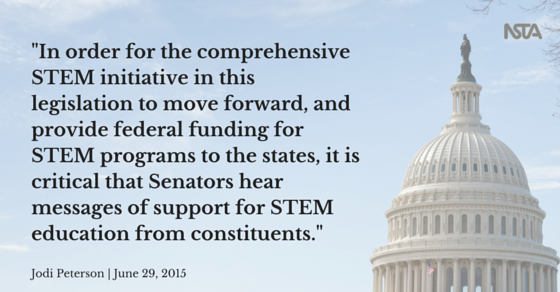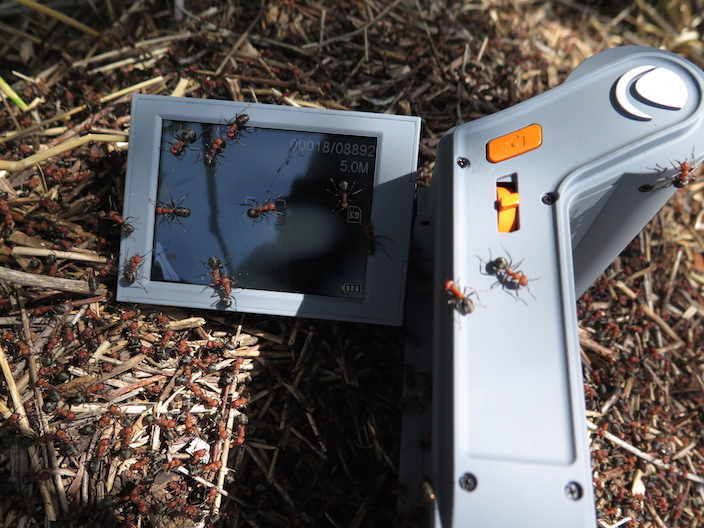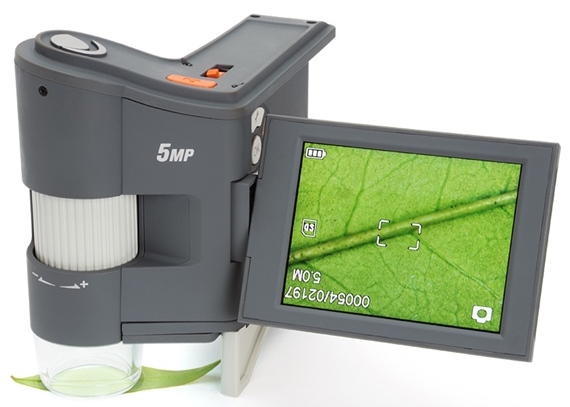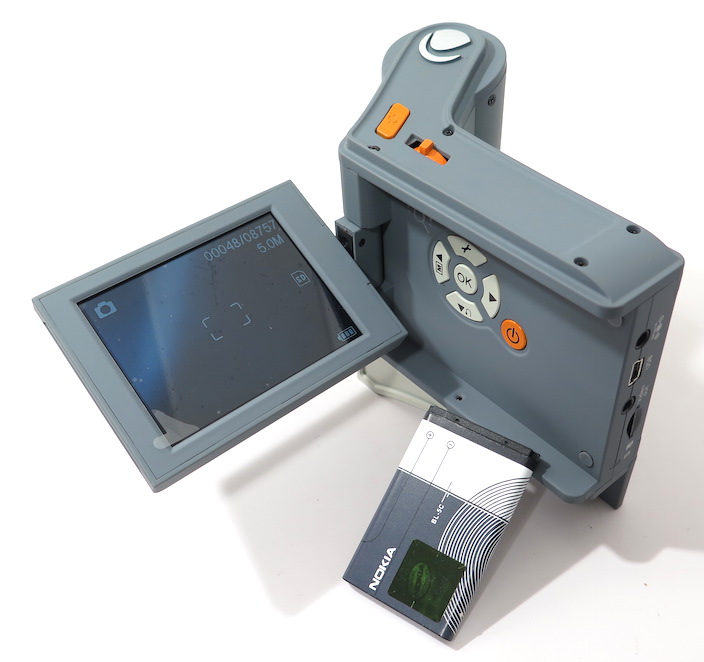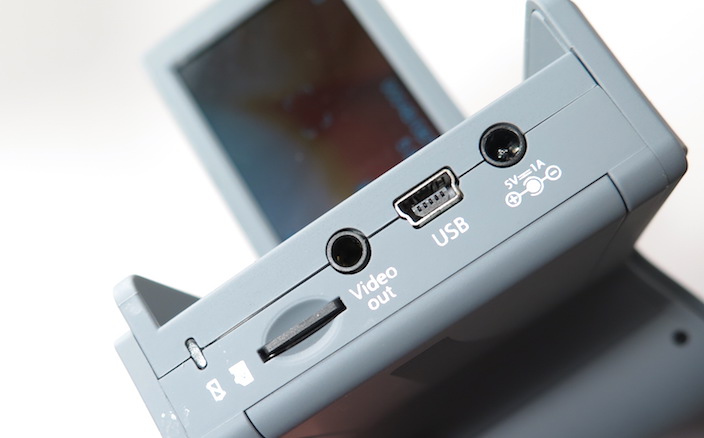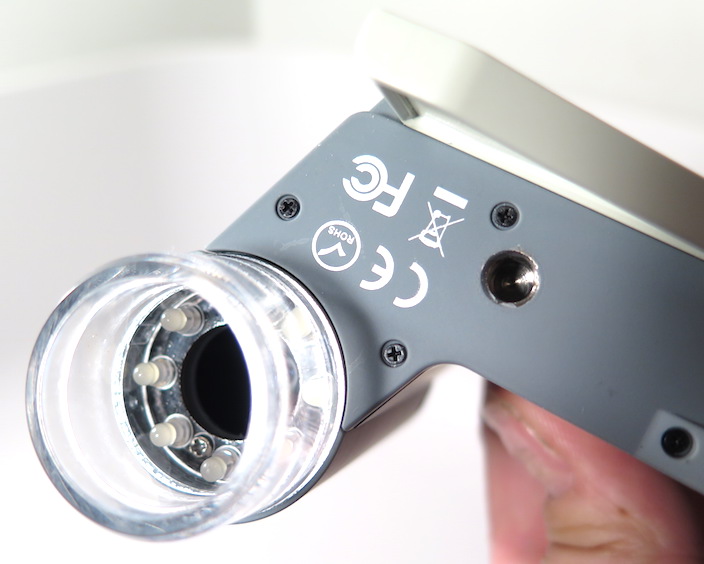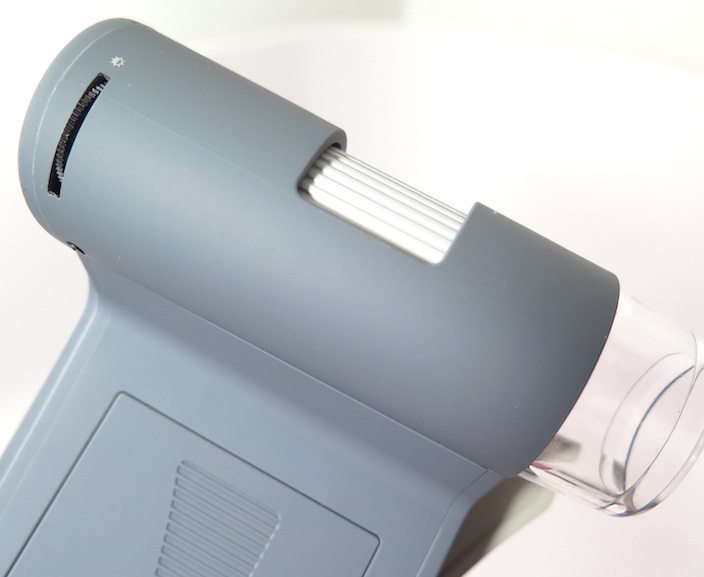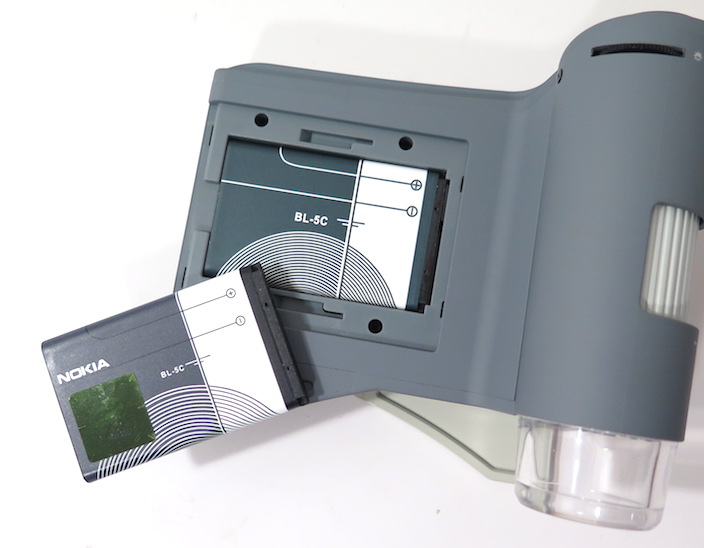Three major features of “doing” science
By Robert Yager
Posted on 2015-07-02
NSTA has identified three major features of students who actually “Do” science. The first of these is Human explorations of the natural world. The second includes Explanations of the objects and events encountered. And the third requires Evidence to support the explanations proposed. These features should be incorporated in science teaching for all students to ensure that students experience the actual “Doing of Science!”
We want students (and teachers) around the world to experience science in every K-16 science classroom. If we’re doing it right, students will “question”, “think creatively”, and “gather evidence” continually to support the explanations. It is especially important that the validity of the explanations proposed be established. Such experiences with “science” are not typically taught to students by science teachers. All (both students and teachers) should share explanations and interpretations about objects and events which they themselves have encountered.
The use of textbooks, laboratory manuals, teacher lectures, and other quick fixes for teacher actions are all opposite examples of “doing” science. Evaluating what students merely remember and repeat individually and/or collectively does not result in real science learning. Students must formulate their own ideas, including minds-on experiences, to really understand all aspects of “doing” science.
G. G. Simpson explained the “doing of science” looks like this:
- Asking questions about the objects and events encountered;
- Formulating possible answers/explanations;
- Collecting evidence in nature to determine the validity of the explanations offered;
- Checking on other attempts made by other experts; and
- Sharing the solution(s) with others.
“Science” is not like art and drama where teachers admire and/or criticize the performances of their best students. “Science” starts with unknowns and then seeking answers to explain them!
Robert E. Yager
Professor of Science Education
University of Iowa
NSTA has identified three major features of students who actually “Do” science. The first of these is Human explorations of the natural world. The second includes Explanations of the objects and events encountered. And the third requires Evidence to support the explanations proposed. These features should be incorporated in science teaching for all students to ensure that students experience the actual “Doing of Science!”
Exploring the properties of clay
By Peggy Ashbrook
Posted on 2015-07-01
 Finding bits of clay pottery made and discarded by people hundreds of years ago reminds me of how this useful material can be a valuable addition to a preschooler’s experience. Of the earth but not commonly found on playgrounds, clay could be regularly provided in a bin for sensory experiences or building material. It can be made into almost anything! I wrote about the process we used to introduce clay work in the Summer 2015 issue of Science and Children.
Finding bits of clay pottery made and discarded by people hundreds of years ago reminds me of how this useful material can be a valuable addition to a preschooler’s experience. Of the earth but not commonly found on playgrounds, clay could be regularly provided in a bin for sensory experiences or building material. It can be made into almost anything! I wrote about the process we used to introduce clay work in the Summer 2015 issue of Science and Children.
 When children first encountered the clay indoors at a table, they were immediately drawn to this new material. After working with the clay, children realized that it stuck to their hands, and some began to purposefully coat their hands in a way they could never do with playdough. This same property made other children avoid the clay. Having a system to rinse off hands in a tub of water after clay work, and before washing them, helped children feel comfortable with the “stickiness” of clay, and saved the excess clay so it didn’t get washed into the drains. Because the children were so used to the feel and texture of playdough, it took some time for them to capably shape it into balls, snakes and castles.
When children first encountered the clay indoors at a table, they were immediately drawn to this new material. After working with the clay, children realized that it stuck to their hands, and some began to purposefully coat their hands in a way they could never do with playdough. This same property made other children avoid the clay. Having a system to rinse off hands in a tub of water after clay work, and before washing them, helped children feel comfortable with the “stickiness” of clay, and saved the excess clay so it didn’t get washed into the drains. Because the children were so used to the feel and texture of playdough, it took some time for them to capably shape it into balls, snakes and castles.
We made sticks available and the children incorporated the two materials. It was interesting that the class of older twos and the class of fours both approached the materials in the same way–sticks stuck into a base of clay. In the fall I will introduce the clay on the playground and see what the children do with it as they have even more time to learn its many uses. It can be used to model 3D forms, draw on its surface, and paint with in a watered down form. Will they incorporate sticks and leaves, decorate it with pinecones or knead in sand to create a new building material?
 Finding bits of clay pottery made and discarded by people hundreds of years ago reminds me of how this useful material can be a valuable addition to a preschooler’s experience. Of the earth but not commonly found on playgrounds, clay could be regularly provided in a bin for sensory experiences or building material.
Finding bits of clay pottery made and discarded by people hundreds of years ago reminds me of how this useful material can be a valuable addition to a preschooler’s experience. Of the earth but not commonly found on playgrounds, clay could be regularly provided in a bin for sensory experiences or building material.
Legislative Update
ESEA (No Child Left Behind) Reauthorization Bill Scheduled for Senate Action July 7
By Jodi Peterson
Posted on 2015-06-29
The Senate debate on the reauthorized Elementary and Secondary Education Act (known as No Child Left Behind) could start on July 7. According to Education Week, Senate Majority Leader Mitch McConnell has officially scheduled the bill—the Every Child Achieves Act (S. 1177)—for floor action following the July 4 recess.
This action comes days after 10 major education groups—including the National Education Association, the American Federation of Teachers, the Council of Chief State School Officers, the American Association of School Administrators, National PTA, and the National Association of State Boards of Education, sent a letter to Senators urging immediate action on the bill.
As reported in the April 17 NSTA Legislative Update, thanks to the leadership of Senator Al Franken (D-MN), Mark Kirk (R-IL), and Patty Murray (D-WA), an amendment to include a dedicated STEM K-12 program in the Every Child Achieves Act was adopted (by a vote of 12-10) when the bill was considered by the Health, Education, Labor and Pensions (HELP) Committee. This will ensure that states would continue to receive dedicated support for STEM activities from the U.S. Department of Education. The language stipulates that each state would receive formula-based funding to support partnerships between local schools, businesses, universities, and non-profit organizations to improve student learning in the critical STEM subjects. Each state would choose how to spend and prioritize these funds, which can support a wide range of STEM activities from in-depth teacher training, to engineering design competitions, to improving the diversity of the STEM workforce.
The Every Child Achieves Act also retains the current federal testing requirement—students would continue to be tested in English and math in third through eighth grades as well as once in high school, and science tests would also be administered three times between third and 12th grade—but the language does away with the current NCLB accountability provisions and allows states to develop their own accountability systems.
Read the April 10 NSTA Legislative Update on the Every Child Achieves Act.
In order for the comprehensive STEM initiative in this legislation to move forward, and provide federal funding for STEM programs to the states, it is critical that Senators hear messages of support for STEM education from constituents.
We have set up a sample letter, which you can personalize and send directly to your Senators, on the STEM Education Coalition website to help you do this. Please take a moment to contact your Senators now
In the House, National Journal is reporting that House leaders will also be bringing their bill to reauthorize No Child Left Behind (the Student Success Act) back for floor debate, and will allow new amendments that would allow schools to keep federal money but opt out of the federal regulations that come with it, and a possible amendment to create a voucher system. The bill was on the House floor earlier this spring, but was pulled from consideration by House leaders before a vote on final passage.
Senate Appropriations Sub-Committee Advances Education Funding Bill: Both the House and Senate Appropriations LHHS/Education subcommittees have passed their FY 16 spending bills, and once again House funding for the Math and Science Partnership program at the U.S. Department of Education was eliminated. Report language on the House LHHS Education bill follows:
Mathematics and Science Partnerships. “The Committee recommends no funding for Mathematics and Science Partnerships, which is $152,717,000 below the fiscal year 2015 enacted level and $202,717,000 below the budget request. This program provides professional development for math and science teachers; these activities can be carried out under other authorities funded in this bill and through other federal agencies such as the National Science Foundation.”
The Senate education funding bill did provide continued support for the Math and Science Partnership program at the Department of Education, at $149 million. We are watching this activity and will stress that the final funding agreement include the Senate funding level.
Stay tuned and look for upcoming issues of NSTA Express for the latest information on developments in Washington, D.C.
Jodi Peterson is Assistant Executive Director of Legislative Affairs for the National Science Teachers Association (NSTA) and Chair of the STEM Education Coalition. e-mail Jodi at jpeterson@nsta.org; follow her on Twitter at @stemedadvocate.
The mission of NSTA is to promote excellence and innovation in science teaching and learning for all.
Follow NSTA
Drifters Take Students on Scientific Ocean Journeys
By Lynn Petrinjak
Posted on 2015-06-29
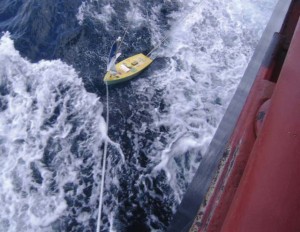
The Charger, a 5-foot-long drift boat, has been launched from larger vessels several times throughout its journey across the Atlantic Ocean. Photo courtesy of the crew of the Philadelphia Express
For three years, sophomores at Swampscott High School in Swampscott, Massachusetts, have been releasing drifters—devices that float along and track ocean currents—as part of Chris Ratley’s College Placement II Geometry class.
To a casual observer, geometry class “might not seem the right place for it, but there is so much math you might not think of,” Ratley explains. “These are not honor students; they are sophomores with lots on the ball, but not showing it in the classroom.”
Ratley says the drifter program, which requires students to build, test, launch, and track the devices via the global positioning system, motivates students because they know “their data is being used in an actual science [research program].” Ratley and Brandy Wilbur, the school’s science, technology, engineering, and mathematics (STEM) coordinator, learned how to build drifters from Jim Manning, an oceanographer with the National Oceanic and Atmospheric Administration (NOAA).
Manning, who studies currents around fishing grounds, has been deploying drifters since the early 1990s. “For the last 10 years, I’ve been getting schools involved in building them,” he says. “We wanted to expand the [U.S.] Integrated Ocean Observing System (IOOS).” He says IOOS, which is an umbrella organization of groups making observations of the ocean, was modeled on the National Weather Service.
“Like the National Weather Service puts up weather balloons, we put out drifters,” Manning continues. “Ideally we will have schools preparing drifters, putting them out every year, every couple [of] months.”
Manning has presented workshops and attended meetings of marine education organizations to connect with educators and other groups. He also seeks out grants, such as one from NOAA’s Marine Debris Program, to fund the drifter program. “The Marine Debris Grant will get us 32 drifters. We can just send out equipment to schools, and the schools don’t have to come up with a couple hundred dollars for a transmitter.”
Manning estimates he has worked with nearly 80 different schools. Although students from preK through graduate school have participated in the program, he suggests, “It is best suited for juniors or seniors in high school. They can work with tools to build drifters themselves and be exposed to what oceanography really is. We are trying to recruit more physical oceanographers. Drifters validate the numerical computer models of ocean [currents]. We don’t have many students at the graduate or undergraduate levels who know about this field.
“We want students to be able to download [data supplied by the drifters] and code. We are teaching them basic Python code…The second half of the drifter project is everything from calculating speed given latitude and longitude to dispersion [of the drifters]. It goes from simple addition to complex mathematics. You can compare the observed track to the estimated track. You can do it simply or more complicated. At the higher levels, we’re teaching how to download wind data, river data. As they get further along…students can download model output and try to predict where their drifter will go.”
At Swampscott High School, students build the drifters according to standardized specifications from Manning, but also have the opportunity to modify parts of the design using various materials from home improvement stores. The basic design is composed of a mast with four crossed poles that hold submerged sails, weights, and a GPS unit. “The whole thing is about 4’ tall and 3’ wide. It doesn’t look like a modern scientific device,” says Ratley.
“The research is to make the designs more environmentally friendly [while keeping the] device sturdy enough to stay together,” says Wilbur. “This is a way to bring oceanography into math class. Students are super-engaged because it’s a real research project. They provide meaningful data [for NOAA]…It provides [students] with a different way to learn, an authentic project that means something [while] they’re learning content.
“These devices are deployed close to shore; they provide real-time data and help researchers verify the mathematical models of the ocean current” used to predict such things as the current’s impact on commercial fishing species and where the current might take a person who fell overboard, says Wilbur. “A drifter provides real-time information about how surface waters are really moving.”
Ratley’s geometry students learn how to make and interpret measurements, use hand tools, test buoyancy, and discuss wind speeds. While developing their math skills, his students are “getting into navigation, figuring out distance, current, wind directions. I’m learning from it too…One of the hardest things when building something is how to manage building and instrumentation while making sure all students are involved,” Ratley notes.
Cassie Stymiest, a program manager with the Northeastern Regional Association of Coastal and Ocean Observing Systems (NERACOOS), has been working with Manning on the drifter program, conducting workshops for educators and compiling resources that she has posted online at http://neracoos.org/drifters. The site includes a map displaying the locations of drifters currently in the water, instructions for building surface drifters, and more. Stymiest says, “All the drifter data are used to validate our circulation models, which is essential to improving search-and-rescue operations, understanding red tides, and studying other oceanographic phenomena. There’s so much you can do with it.”
Crossing the Atlantic
While surface drifters like those launched by Swampscott students are moved by water currents, others are designed to use wind power as well. Barbara Nidzgorski, Young Scholars program coordinator at John Winthrop Middle School in Deep River, Connecticut, purchased a drifter boat from Educational Passages in 2012. Winthrop seventh and eighth graders decorated the 5’ boat and included information about their school and a flash drive with a recording of a performance by the school’s band and chorus in the Charger’s watertight chamber. The boat was launched in May of that year off the coast of South Carolina. After being driven back to shore by storms, the boat was relaunched by a SCUBA company. Since then, the Charger has traveled north to Newfoundland and across the Atlantic Ocean to Wales. It was launched once more by a ship out of England’s London Thamesport before traveling to Portugal and then to Guyana in South America.
Nidzgorski says the boat has been used in numerous classes, from science to math to art. “Every single area of education can be included [in a drifter program]: marine science, ocean science, math,…We had kids predicting where it was going to be. In the beginning, it was pinging six times a day; later, twice a day. There’s a lot of vocabulary; kids have written about it. The biggie is latitude and longitude.”
The program also has forged connections across the school, community, and the world. Local companies donated services and marine paint to help the Winthrop students prepare the boat for launch. A message on the boat instructing anyone finding it to take the vessel to a school has led to exchanges with students in Wales and Portugal. As the boat was refurbished before being released on its journey once again, students in those countries met with the adults who repaired the boat.
Nidzgorski is now working to get the Charger either shipped back to Connecticut or relaunched from Guyana. If relaunched, she hopes the boat will be able to complete a circuit of the Atlantic Ocean by arriving in Florida. “It’s 80% of the way around,” she proclaims proudly. Regulations in Guyana have prevented its relaunch so far, but Nidzgorski says the school has asked state officials to help find a way to get the boat headed home or back out to sea.
“So many cool things happen, every [boat’s adventure] is different. It’s pretty amazing…The investment you put in, you get so much more back,” she says. “This is the way our ancestors traveled: the current and the wind. That’s the way our initial explorers came across the ocean.”
Drifter Resources
For more information on drifters, educators can visit www.studentdrifters.org, http://neracoos.org/drifters, and www.educationalpassages.com, or e-mail Jim Manning at james.manning@noaa.gov.
This article originally appeared in the Summer 2015 issue of NSTA Reports, the member newspaper of the National Science Teachers Association. Each month, NSTA members receive NSTA Reports featuring news on science education, the association, and more. Not a member? Learn how NSTA can help you become the best science teacher you can be.
The mission of NSTA is to promote excellence and innovation in science teaching and learning for all.
Follow NSTA
Get Lost in the Magic of Learning with the Celestron Flipview Digital Microscope
By Martin Horejsi
Posted on 2015-06-26
One of the wonderful things about the amazing science education technology available to teachers today is that the tech can disappear—in a good way. The Celestron Flipview digital microscope is one of them.
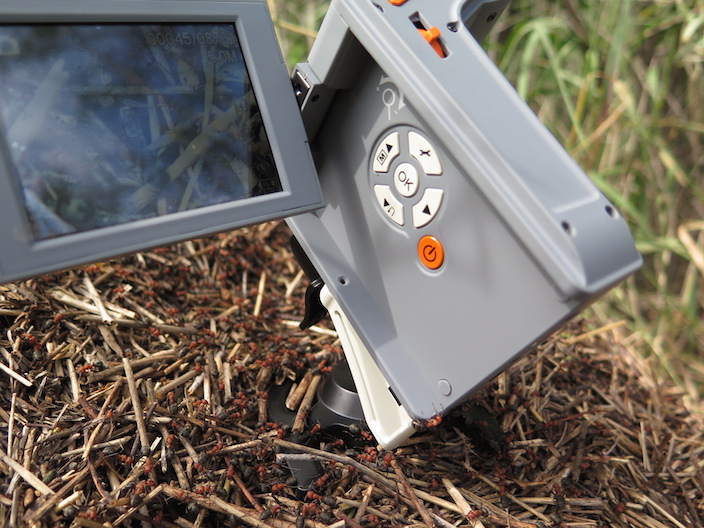
What science teachers are reading June 2015
By Claire Reinburg
Posted on 2015-06-25
Here are the most-read books, e-books, and children’s trade books on NSTA’s website this month. Click over to the NSTA Science Store and catch up on what’s hot this June on science teachers’ reading tables and tablets.
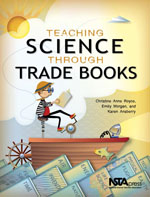 Most Popular NSTA Press Books
Most Popular NSTA Press Books
Teaching Science Through Trade Books
More Picture-Perfect Science Lessons: Using Children’s Books to Guide Inquiry, K-4
Argument-Driven Inquiry in Chemistry: Lab Investigations for Grades 9-12
Uncovering Student Ideas in Science, Volume 1: 25 Formative Assessment Probes
The NSTA Quick-Reference Guide to the NGSS, Middle School
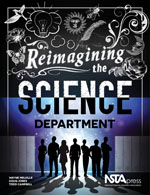 Most Popular NSTA Press e-Books
Most Popular NSTA Press e-Books
Reimagining the Science Department (e-Book)
Teaching for Conceptual Understanding in Science (e-Book)
Earth Science Puzzles: Making Meaning From Data (e-Book)
Uncovering Student Ideas in Science, Volume 4: 25 New Formative Assessment Probes (e-Book)
Using Physics Gadgets and Gizmos, Grades 9-12: Phenomenon-Based Learning (e-Book)
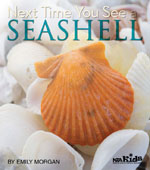 Most Popular NSTA Kids Books
Most Popular NSTA Kids Books
Spenser and the Rocks: I Wonder Why
Dark as a Shadow: I Wonder Why
How Does a Plant Grow?: I Wonder Why
Environments of Our Earth: I Wonder Why
The mission of NSTA is to promote excellence and innovation in science teaching and learning for all.
Follow NSTA
Here are the most-read books, e-books, and children’s trade books on NSTA’s website this month. Click over to the NSTA Science Store and catch up on what’s hot this June on science teachers’ reading tables and tablets.
Name Your Resource
By Christine Royce
Posted on 2015-06-24
Just about four years ago, A Framework for K-12 Science Education appeared on the scene, and just over two years ago the Next General Science Standards were published and released. Since that time, there has been much effort put into and collective cognitive focus on the best way to educate all stakeholders about the standards, as well as implement the standards with fidelity into the K-12 classroom environment.
In the past two years, a variety of different strategies and resources have emerged on the scene that are designed to assist educators. Some examples of these approaches, tools, and resources include:
- An Interactive Online Version of the NGSS which assists the user in searching for particular areas.
- The EQuIP NGSS Rubric is a tool for educators and education leaders to use in identifying high quality, NGSS-aligned instructional materials through a criterion-based, peer-review process.
- State Science Education Standards Comparison Tool which supports administrators in comparing the differences, both in purpose and structure, between different sets of standards.
- Classroom Sample Tasks: (Introduction and Overview) (View and Download Tasks Here) The Classroom Sample Tasks blend content, practices, and concepts from both the NGSS and the Common Core State Standards. Teachers across the disciplines have collaborated to write sample tasks, which are the result of a vision of integrating science, engineering, and mathematics for classroom use.
- Evidence Statements provide detail on what students should know and be able to do in order to satisfy each performance expectation (PE) at the end of instruction.
- NGSS Teaching Channel Videos are intended to help educators become familiar with the three dimensions of the NGSS and how they will benefit students.
- The Discover the NGSS eBook is a new an interactive eBook that helps teachers dive into the NGSS.
As an author who regularly publishes in Science and Children there has even been a concerted effort to present information related to the NGSS in featured articles and regular columns in a consistent format to assist educators in seeing how the standards can be implemented. These tables explicitly show the performance expectations, crosscutting concepts and scientific and engineering practices that are met in an activity or investigation and specifically how they are met. Having to go through the process of discussing and considering statements, evidence, process and approach has allowed me to better understand what is meant and what that looks like in the classroom. Utilizing some of the above resources has assisted greatly in that process.
Even educators in states who have not adopted the NGSS can learn from the resources provided above as they are based on solid presentation of content and understanding of the interaction between concepts, practices and ideas.
How have you utilized one of the above resources or even describe a different resource that you have found helpful in integrating and utilizing the NGSS in your classroom?
Just about four years ago, A Framework for K-12 Science Education appeared on the scene, and just over two years ago the Next General Science Standards were published and released. Since that time, there has been much effort put into and collective cognitive focus on the best way to educate all stakeholders about the standards, as well as implement the standards with fidelity into the K-12 classroom environment.
Bruce Alberts’ Grand Challenges Offer Reforms Sought by Science Educators
By Robert Yager
Posted on 2015-06-24

Bruce Alberts, co-founder of the Science & Health Education Partnership, brings science to life in a San Francisco public school. UCSF Public Affairs file photo circa 1987.
Bruce Alberts grew up living near Chicago where his love of science started at an early age. He received a bachelor’s degree in biochemical science and a doctorate in biophysics. Alberts is best known for having served as President of the National Academy of Science (NAS) for 12 years. He is an advocate of improving science education in both primary and secondary schools. It is apparent that his daughter’s teaching has influenced Alberts as she continues teaching high school science in the San Francisco Public Schools.
Alberts also served for five years as Editor-in-Chief for the AAAS journal Science. As his service ended in 2013, he offered Three Grand Challenges for improving science teaching. The first Challenge was to encourage using the wisdom of teachers and education researchers alike. Specifically, it was to “Build education systems that incorporate the advice of outstanding full-time classroom teachers when formulating education policies.” Such teaching has been central to the NSTA Exemplary Science Program (ESP) monographs.
The second Grand Challenge offered by Alberts was to: “Harness the influence of business organizations to strongly support the revolution in science education specific in the 2013 Next Generation Science Standards.” He argued that we need more partnerships with business, industries, and education leaders across the world. Currently a major reform effort exists called STEM (Science, Technology, Engineering, and Mathematics) with innovations designed to prepare young people for future science careers. The NSTA publication Exemplary STEM Programs: Designs for Success illustrates how STEM reforms are being used to change science teaching at all levels (K-16).
The third Grand Challenge offered by Alberts was to: “Incorporate active science inquiry into all introductory college science classes!” Many college teachers are now accepting this challenge for improving college teaching. The STEM reform mandated exemplary science teaching should be approached without the typical use of textbooks, laboratory manuals, and teacher lectures. Such change is needed to exemplify evidence of real learning by students and not just their reciting what they remember from textbooks and lectures. Changing typical teaching methods used by college science faculty is one of the most needed changes (but hardest to achieve). College professors often are only interested in research and grant funding – not teaching!
Alberts urges all, especially scientists, to be active collaborators and to focus on teaching that improves student learning and use of the information that illustrates the real “doing” of science. This means exploring the natural universe, seeking explanations of the objects and events encountered, and seeking evidence to support the explanations proposed. All teachers should encourage students to focus on “doing” science as opposed to just reciting what they remember from textbooks and teacher lectures. Current reforms of science can be met by using the three “Grand Challenges” offered by Bruce Alberts. But as Alberts stated in 2013, “A start has been made, but much more remains to be done.”
Robert E .Yager
Professor of Science Education
University of Iowa
Classrooms as ecosystems: The physical environment
By Mary Bigelow
Posted on 2015-06-23
(This is a continuation of Classrooms as ecosystems: Social interactions, in response to a question about creating a classroom that is a positive place for learning:
 The physical environment
The physical environment
When I taught a graduate education class, I asked my students to provide visual tours of their classrooms with photographs and descriptions explaining why the room was organized the way it was: why the desks or tables were configured the way they were, what was on the bulletin boards and why, how materials were stored, where the teacher’s desk was positioned and why, and their wish lists on how the space could be improved. (I modeled the activity with my own classroom). This led to an interesting discussion on physical factors that affect learning and the types of activities that teachers and the students can do. This of course varies by age and subject area; an elementary classroom has different characteristics than a secondary science lab.
In general, you’ll want your classroom/lab to be physically conducive to learning: safe, comfortable, flexible, and attractive. Students should know that this is a science space (whether it’s an entire classroom or a science corner), with appropriate materials and organization.
Safe: Your classroom/lab should have appropriate safety features, running water, electrical outlets, and flat tables. If you’re teaching science in a regular classroom without these, you and the students are limited in what you can do. If an activity or investigation cannot be done safely, you can’t do it, regardless of how interesting it might be. (See the blog Lab Safety Question)
If you’re a floater (unfortunately a common assignment for new teachers), it’s very hard to get a sense of place with students. Every room will be different, and the teacher based there may be territorial enough to limit what you can do (Don’t write on the board, don’t use the projector, don’t move the desks, etc.). This situation requires planning and cooperation among teachers and administrators to ensure that all students have equitable opportunities in an appropriate facility.
Another aspect of safety is the amount of clutter. (We teachers are often pack rats; we never know when we’ll need something!) Storage space in classrooms and labs is often at a premium. But without a plan for organizing and storing materials, classrooms can become overwhelmed with stuff and become fire hazards, dust collections, and barriers to student movement and exits. The clutter is also distracting to students.
Comfortable: There should be enough flat-topped desks or chairs and tables for students to work. Students should have room to move around and spread out. Desks and lab tables should be the appropriate size for the students (this is sometimes a problem in middle schools that are repurposed high schools). The lighting should be adequate, especially in rooms where there are no windows.
Flexible: We’ve all seen pictures of schoolrooms with student desks bolted to the floor. While this might be a custodian’s dream come true, it’s not necessarily appropriate for a variety of learning activities. No one seating arrangement is best—each has advantages and disadvantages, depending on the learning activities. If you use a variety of instructional strategies in your class, you’ll want to use a variety of seating arrangements. (See the blog Classroom Seating Arrangements.)
Attractive: If there were a “Classroom Beautiful” magazine, I’m sure there would be many nominees for the cover. Many teachers spend hours each year planning and creating colorful bulletin boards. But what about student input? The classroom should belong to the students rather than serve as a shrine to the teacher’s interests or artistic abilities. (See the blog Displaying Science on Classroom Bulletin Boards and The Classroom as Learning Center.)
It is possible to have an attractive classroom that does not require much time or expense. You can set up a table with materials related to your current topics for students to examine (e.g., shell collections, animal bones, rock samples, weather maps, simple machines). Hand lenses and microscopes invite students to explore. A display of science trade books can brighten up a corner and encourage students to browse and learn.
Another component of an attractive classroom is organization—a place for everything and everything in its place. Having designated places for materials and de-cluttering is easier said than done in a classroom, but students can be part of this endeavor.
I’m sure your cooperating teacher works hard at creating and adjusting an effective and efficient learning environment. With careful planning, organization, monitoring, and reflective feedback, your new classroom ecosystem can facilitate learning as a joyous, exciting adventure.
(This is a continuation of Classrooms as ecosystems: Social interactions, in response to a question about creating a classroom that is a positive place for learning:
 The physical environment
The physical environment





